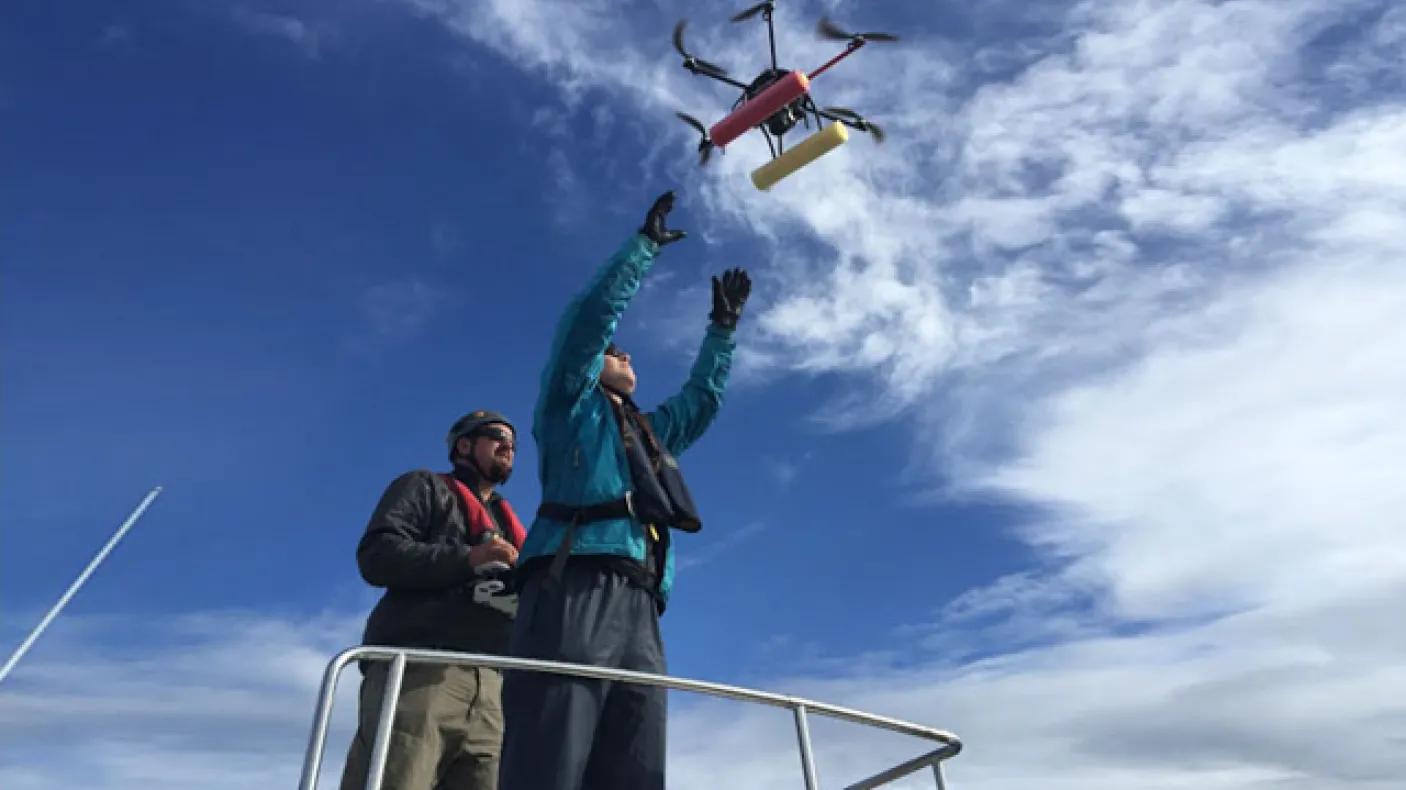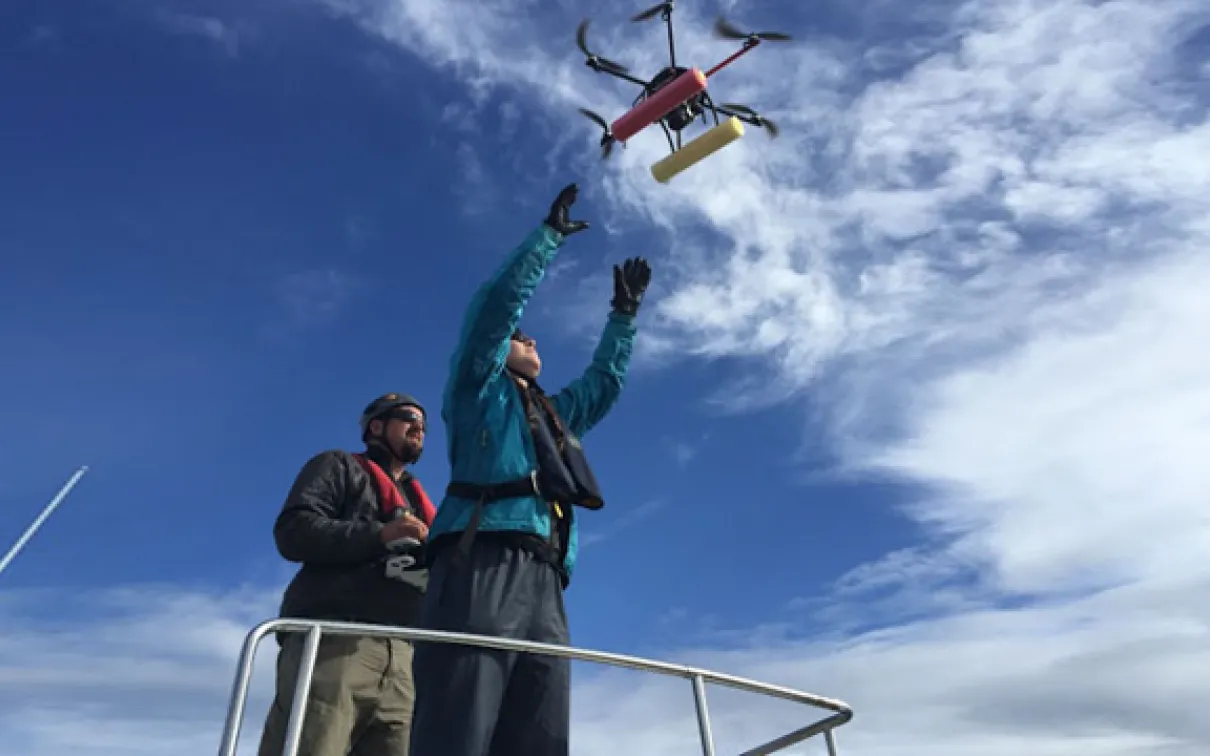How Drone Photography is Saving Wildlife
Published
Categories
Author
Blog Post
Guest Blog written by Environmental Visual Communication student Lisa Milosavljevic
In the past few years, drone photography has provided us with more images from the skies than ever before. These Unmanned Aerial Vehicles (UAVs), commonly known as drones, are aircrafts that do not have a human pilot aboard and are either controlled by a remote from someone on the ground, or by a computer onboard the vehicle. More people are becoming acquainted with this technology through recreational use and capturing stunning photography and videos. But there is also a growing demand for its use in professional and academic fields as people are recognizing how drones can be a valuable tool in their work. One of these areas is wildlife conservation. Here we are going to look at the different ways in how drone photography is saving wildlife around the world.
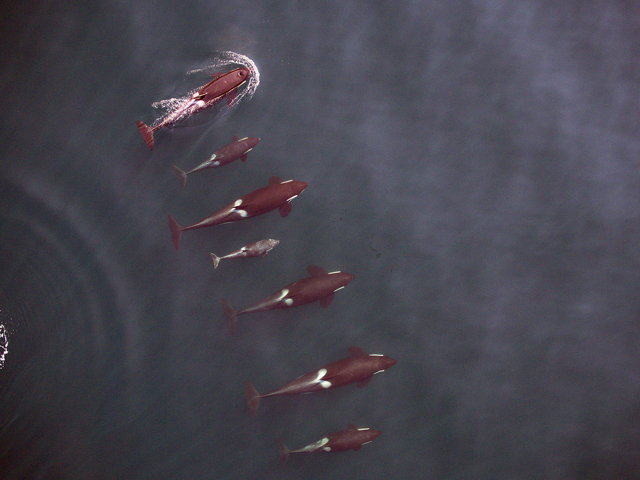
1. Research
The Vancouver Aquarium recently captured beautiful pictures of killer whales off the coast of British Columbia, which have been used to study their health. The high-resolution images let researchers to see if they are eating enough by measuring changes in their length and girth. These aerial images provide views that scientists cannot get from a boat and allow for easier monitoring of ocean mammals. Not only that, drones allow researchers to view migrations, social organization, and behaviour of wildlife in new ways.
2. Cheaper and Safer Work
The prevailing source of on-the-job mortality for wildlife biologists is with light plane and helicopter crashes. Drones are able to do the survey work traditionally done in planes, but in a much safer way. It provides a cheaper and safer alternative to surveys and monitoring by light planes and helicopters, meaning that more research can be done with less time and money.
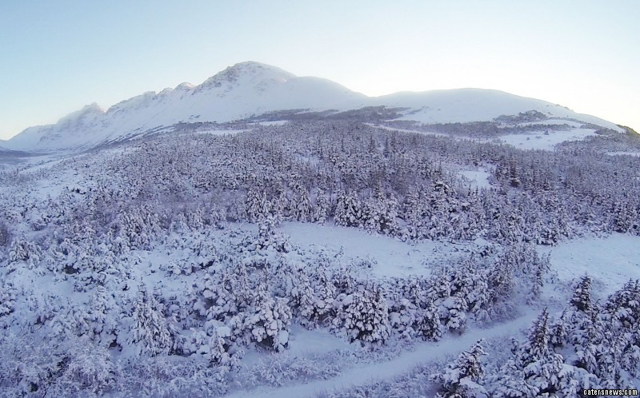
3. Access to Hard-to-Reach Areas
The ability to access remote places that have few roads and difficult conditions to traverse is a huge advantage. The University of Alaska Fairbanks have drones that can fly for up to 24 hours, allowing for researchers to better study wildlife offshore or deep into the wilderness. These surveys provide a more complete look at ecological and populations changes to answer questions like what drives wildlife to migrate.
4. Mapping and Surveying
The Jane Goodall Foundation has used drone photography on a recent project to map out and monitor chimpanzee habitats in Tanzania. These surveys capture photographs at a distance, stitching together a map of an area. Some things that researchers can do with looking at the information collected are to build fresh maps, and monitor populations and habitats.
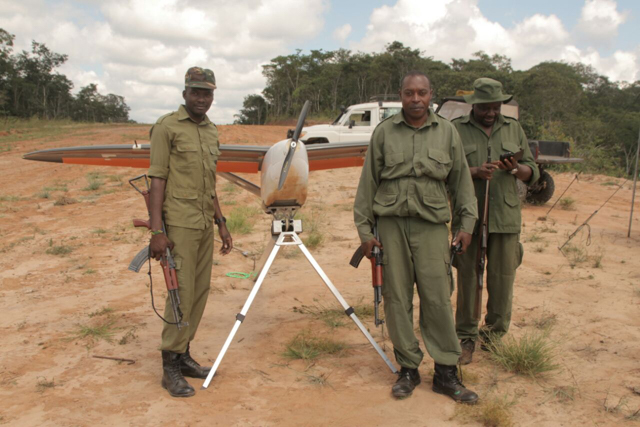
5. Anti-Poaching
Park rangers have been using drones to watch for poachers, as well as illegal mining and logging. A Kenyan reserve has incorporated drones into their strategy to combat elephant and rhino poachers. From two laptops, rangers simultaneously track the drone's flight path by map and watch from the sky through a point-of-view camera. The cameras are also equipped with thermal-imaging so that they can continue to monitor the grounds at night, the time when most illegal activity happens.
6. The New Scarecrow?
Earlier this year, there have been plans about adding noise-makers to drones, to chase away invasive European starlings in the Okanagan Valley in B.C. This species of bird have overpopulated the region, competing with native birds for food and nest sites, as well as decimating crops. If the experiment goes well, we might see the evolution of the scarecrow.
7. Stunning Images
The unique perspective from the height or the bird's-eye view lets us see the world in a new way. As the quality of recreational drones improves, we will see a rise in aerial photographers. There are already contests out there gathering the best of the best.
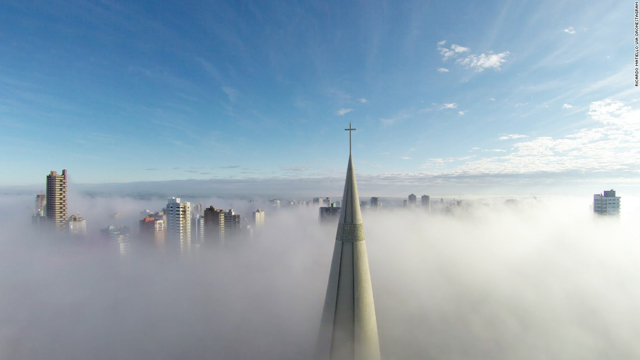
Important things to remember about drone photography:
Don't get too close
A far-away approach is best. A study in Minnesota was conducted this year to see if animals were threatened by drone vehicles by measuring changes in the heart rate of bears. All the close encounters with a drone showed an elevation in heart rates, showing signs of stress. Whether or not this is a natural response to new intruders on an animal's turf, you might want to keep a distance to avoid losing your gear to a protective mother, like when this film crew got their drone camera knocked out of the sky by a chimp in a Netherland zoo.
Range of technology
Today's market has spectrum of drones, some of which are a mere few hundred dollars and are being used to get interesting selfies while on vacation. However, some of the speciality equipment used in conservation can cost tens of thousands of dollars, and in some anti-poaching cases, upwards of a quarter million. But remember, keeping endangered animals alive is incredibly valuable!
Drones won't replace traditional conservation work
Drone technology has shown that it has a valuable place in wildlife conservation, and more of its applications are becoming apparent. Drones are not fully replacing traditional conservation work, but rather, complementing it. It provides a cheaper and safer alternative to surveys and monitoring by light planes and helicopters, meaning that more research can be done with less time and money. And not to worry about drones replacing people, the data still needs to be interpreted and the vehicles flown. In a time where timely research and protection is critical, drone photography is here to provide the much needed help for wildlife conservation.
